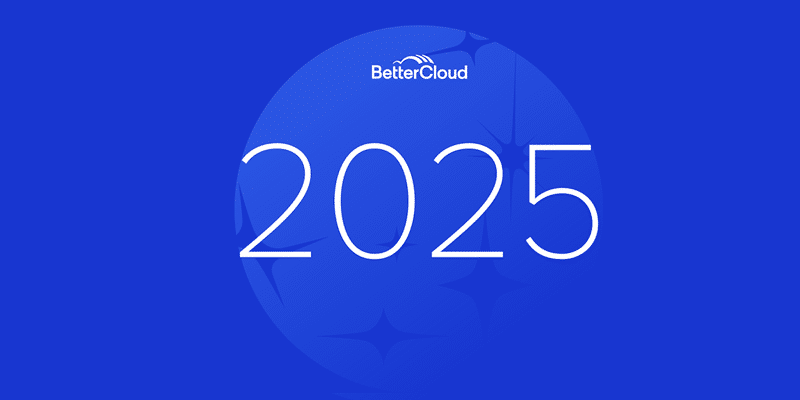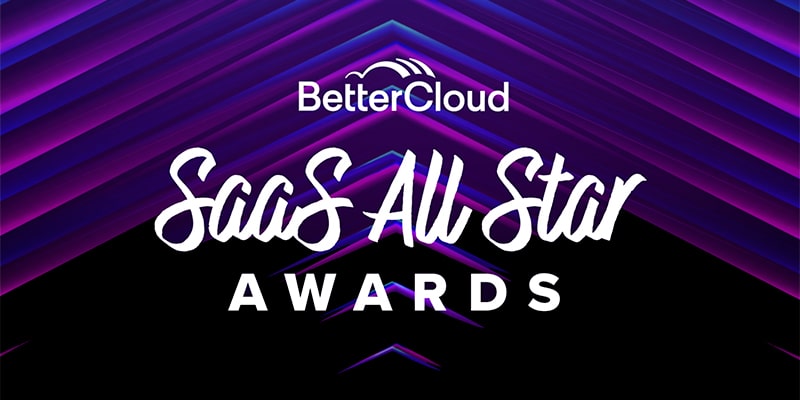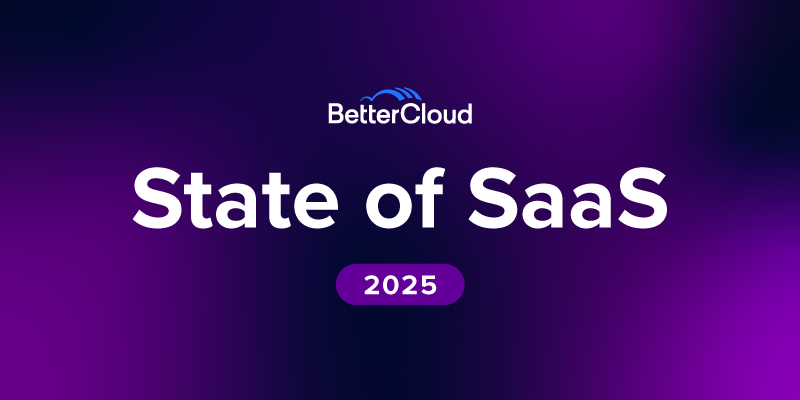Here Are the Tools I Use to Manage 96 Different SaaS Applications
July 27, 2016
5 minute read

How do we manage it all?
Today, we run and manage 96 different SaaS applications with a two-person IT team. That’s a lot.
So, how exactly do we do it?
The reality is, I rely on several core SaaS applications to manage the dozens of other SaaS applications we use. Without the proper tools in place, it wouldn’t be possible to operate the way we do.
But before we dive into the apps I rely on most, I wanted to offer three pieces of unsolicited advice to make your SaaS life so much easier.
- Turn on single sign on (SSO) BEFORE you roll out an application
- Use two-factor authentication
- Use both whenever possible
If you don’t, you’ll be kicking yourself later.
How do I keep track of the applications we use and how we’re paying for them? I use a simple IT Service Catalog. Download the free template I use.
Now, here are the core applications (along with example integrations) I use to keep BetterCloud secure and productive:
Cloud Office System: Google Apps for Work
Google Apps is where I spend most of my time. About half our business processes touch Google Apps in some way, whether it’s through Google Drive, Sheets, Slides, Gmail, or Hangouts. It’s core to what we do.
The Google Apps Admin console delivers basic management functionality and not much more. As an admin, it has made life much easier, but once you reach a certain level of sophistication, you really need a powerful third-party management tool.
SaaS Control: BetterCloud
Yes, I work at BetterCloud, and yes, I use our product to control our environment. In fact, I use it so much I consider myself spoiled. I want to be unbiased here, but honestly, I can’t.
It would be extremely difficult–borderline impossible–for me to do my job without BetterCloud. It’s core to nearly all IT-related actions I take.
This is where I tell you to install BetterCloud and try it for yourself! 😉
Messaging & Collaboration: Slack
If you aren’t a Slack user yet, I highly suggest it.
Slack is really so much more than a chat application. It’s a platform. Not only do we use Slack to communicate across teams, but it’s our company’s primary information hub. We’ve configured numerous integrations to stream data and information to the right people at the right time.
Slack has quickly become an asset to our IT department (more on that later).
Ticketing & Support: Zendesk
All of our ticketing and incident management runs through Zendesk. Zendesk is great because it leaves behind a paper trail to hold IT accountable. It’s easy to say you missed a Slack message or email, but with Zendesk, requests are logged and dated.
When we rolled Zendesk out several years ago, it was difficult to get people to submit tickets. A helpdesk is useless without tickets. If employees are constantly emailing or chatting you for help, submit a ticket on their behalf and answer through your support platform. This will train your employees and reinforce your support channel as the best means of contact.
Integrations: Zapier
We use Zapier fairly heavily internally. Zapier is the bridge between applications not easily connected on their own. It gives us a ton of automation options we previously didn’t have.
They have a HUGE selection of “Zaps,” and I recommend everyone go explore and tinker with Zapier because it will alleviate a lot of unnecessary repetitive tasks.
Device Management: Google Mobile Device Management & Casper Suite
If I were to launch a new Google Apps domain from scratch, I’d turn on Google Mobile Device Management (MDM) from the start. Shoehorning MDM in with more than 100 employees has been painful.
With MDM, I use flexible policies. You actually want your employees to use their phones for work, don’t you?
The majority of our employees use MacBooks, so I use the Casper Suite to manage them. Casper has really been a game-changer for us and helped cut down the time spent managing MacBooks.
As soon as you can, register your Casper instance with Apple’s Device Enrollment Program (DEP). With DEP, every time you purchase a new Macbook, the first time it connects to WiFi it will automatically enroll. It’s pretty nifty and eliminates hours of work.
I haven’t found a good solution to manage other types of laptops yet, so if you have suggestions, let me know!
Networking: Meraki
Since we run a 100% cloud environment, WiFi is pretty damn important. I keep the Meraki dashboard open all day to monitor network activity and identify bandwidth hogs when they dare show themselves.
Notifications: Pagerduty
PagerDuty is a trusty companion when you need it most. Whenever somebody submits an urgent ticket, PagerDuty sends me a text. If I don’t answer, it will call me until I do.
I only use PagerDuty for the worst of the worst, but it’s the best notification for critical issues because it literally won’t stop until I answer.
Email Security (Spoofing Protection): dmarcian
dmarcian helps you configure the DMARC, DKIM, and SPF records to prevent spoofing. It’s really simple. Once you set it up, there is virtually zero upkeep.
Once a week, dmarcian emails me a report of all the emails sent and where they’ve been sent. This gives me valuable insight into our mail flow. dmarcian also immediately emails me if it detects any real deliverability issues.
Trust me, you’ll love dmarcian. It’s a really small company, but the tool is pretty awesome.
Video Conferencing: Chromebox for Meetings
I wasn’t sure whether or not I should include Chromebox for meetings on this list, but they’ve taken a lot of work off my shoulders so I wanted to give credit where it was due.
Our company relies on Chromeboxes for internal and external video conferencing. Today, we have configured nearly 50 Chromeboxes (about one for every three employees!).
Chromebox for meetings takes about two minutes to configure, and they’re extremely user-friendly. I rarely have to answer support tickets related to our Chromeboxes.
Pro-tip: Make sure you label your remotes. Chromebox remotes only work with the Chromebox they came with.
How do I keep track of the applications we use and how we’re paying for them? I use a simple IT Service Catalog. Download the free template I use.
The Power of Integrations
Few SaaS applications can revolutionize the way we work without the help of others. The power of the cloud today is in IT’s ability to weave together applications and build scalable integrations.
The more you can smartly integrate SaaS applications, the more your department will positively impact the bottom line. That’s my opinion, but at BetterCloud it’s a fact.
Today, a lot of our most helpful integrations are Slack integrations. I won’t go into crazy detail about them all (that would take weeks), but here are some examples of how we’ve leveraged integrations at BetterCloud to help IT and the company as a whole.
Zendesk + Slack
This is one of the simplest integrations we have. With Zendesk and Slack, all helpdesk tickets are get routed to a specific channel and are updated when their status changes.
This is a solid integration for a company with a smaller helpdesk, but I imagine as we grow it will become too noisy. If you want to get the most out of Zendesk and Slack, I recommend using Zapier or Google Apps Script to create a more customized integration.
Meraki + PagerDuty + Google Apps + Zendesk
You don’t need updates for all WiFi activity, but making sure you set up the correct Meraki email alerts will keep you ahead of the curve. I get an email alert any time our primary or backup WiFi goes down. Those are both important events, so PagerDuty is alerted and a Zendesk ticket is opened simultaneously.
Slack + Salesforce + Zendesk + Zapier + Google Apps + Google Apps Script
This is by far my favorite (and most complex) integration.
We wanted to create a channel in Slack dedicated to the different individual and team wins around the company. Since we operate in different offices, it can be difficult for each office to see the other’s progress.
So we created a #wins channel to boost visibility into the different accomplishments across the company. In the #wins channel, data is piped in from a number of different sources including Salesforce (closed/won deals) and Zendesk (positive feedback). Managers can also enter the /wins command in Slack and post an anonymous message to the channel praising individuals or teams.
Note: We keep chat to a minimum in the #wins channel to remain on topic (we do have lots of emoji reactions going on though!).






